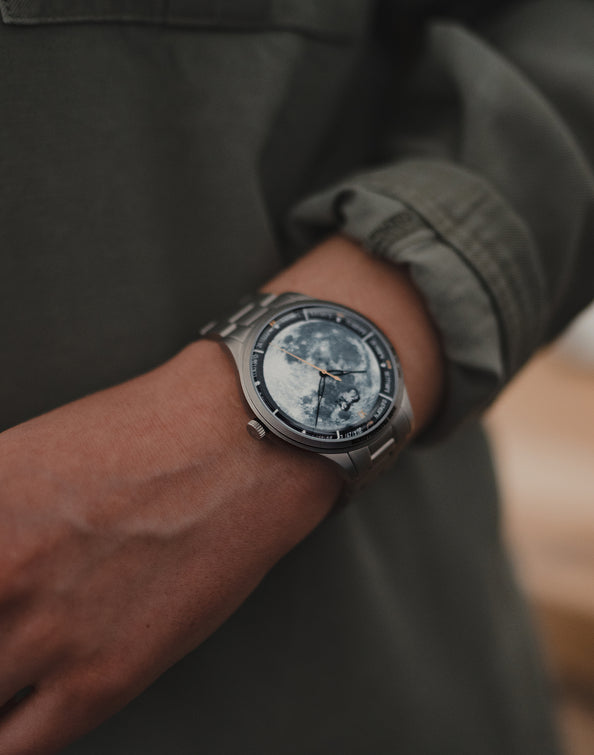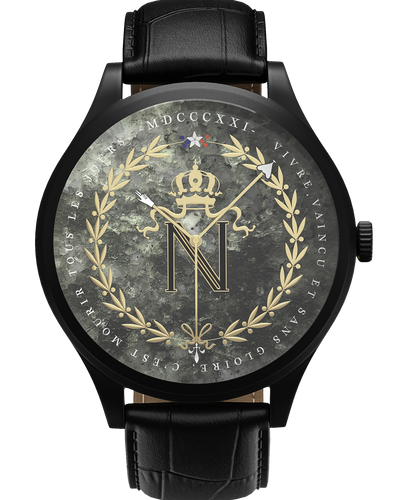The watch in tribute to the Apollo XI mission
On July 21, 1969, at 2:56 UTC, Neil Armstrong became the first man to walk on the Moon. Launched by the Apollo 11 mission, he uttered one of the most famous phrases of modern times: "One small step for man, one giant leap for mankind."
choose the version that suits you
Automatic or Quartz
The Sellita SW200-1 Swiss mechanical movement powers the Carbon, Steel, and Titanium automatic models with exceptional precision. The Swiss quartz movement from the Normtech line, caliber 703, powers the Quartz Steel model with exceptional precision.
White or Carbon
The case back of the Carbon model is made of forged carbon, combining lightness and strength. The bracelets of the White models in Titanium or 316L stainless steel, in white color, combine lightness and refinement.
Lunar 1969 Automatic
From 1.899€
Discover the symbolism of LUNAR 1969
Hover your mouse or press your thumb over the watch's elements to reveal hidden meanings. Each symbol has been carefully designed to tell a part of its story.
A Fragment of the Moon on the wrist
The Lunar 1969 collection features an authentic fragment of lunar meteorite NWAA115-15, discovered in 2017 in Northwest Africa. Supplied by MSG Meteorites, a British company approved by IMCA, each watch comes with a certificate of authenticity including a spectrometric analysis. The automatic, titanium, and carbon collections are limited to 200, 100, and 100 numbered pieces, respectively.
“That's one small step for a man, one giant leap for mankind.”
— Neil ARMSTRONG - 07/20/69, 21:56 UTC-5
A meeting with Alfred Worden
A copy of this collection was personally presented to Alfred Worden by founder Sébastien Colen, in tribute to his key role during the Apollo 15 mission in 1971. Left alone in orbit while his crewmates explored the Hadley Mountains, he orbited the Moon 74 times, becoming the world's loneliest man according to the Guinness Book of Records. On the return journey, he performed a 38-minute spacewalk to retrieve films stored outside the module.
Technical description
You might also like
Frequently Asked Questions






















